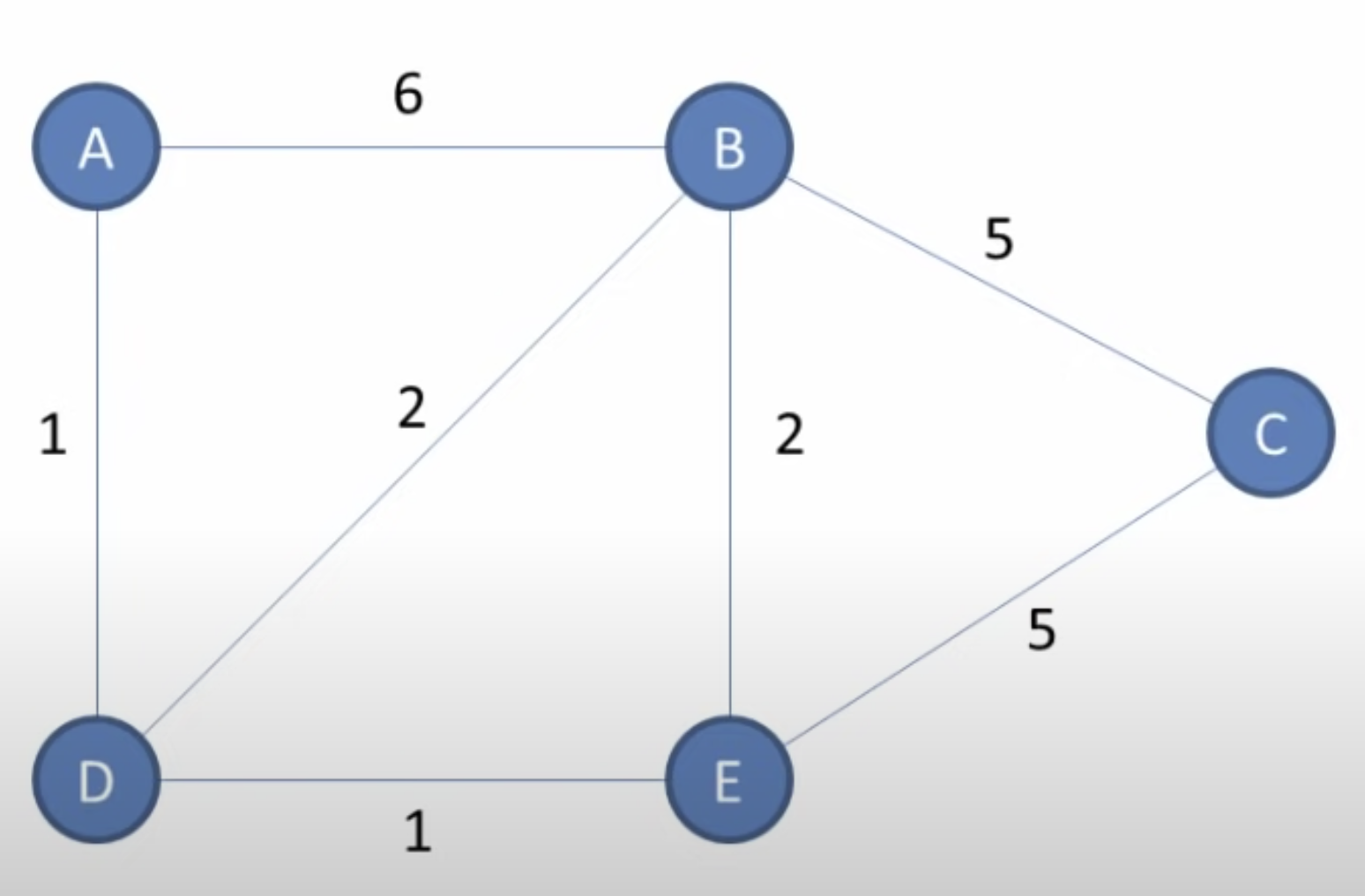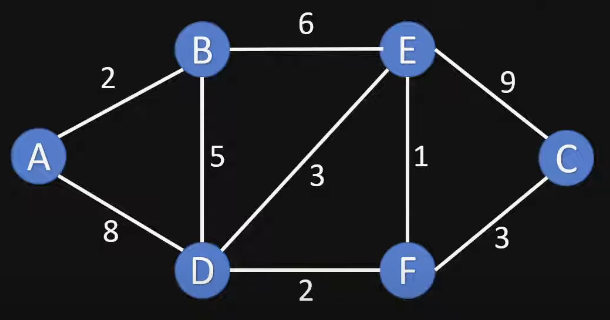Dijkstra's Shortest Path Algorithm Typescript Implementation
goals for this project
- study and learn about a new algorithm I didn't previously know (in this case dijkstra's shortest path algorithm)
✅ - study it via wikipedia and youtube conceptual videos
✅ - based off conceptual information/videos understanding write my own implementaiton without looking at others code/implementations (challenging part)
✅ - looking at some pseudo code is allowed (though i limited that for this algorithm), but looking at others implementations is disallowed
✅ - once algorithm is implemented, write unit tests to verify output results are correct given the graph, starting node inputs
✅ -
side quest: test with multiple different graphs to be even more confident in implementation
✅
running
- npm i
- npm run start
running tests
- npm run test
graphs tested with code usage examples
look at index.ts code for example usage! or read below for a more in detail explaination of how to use code.
graph A tested with example code usage
algorithm implementation and graph used based off of youtube video https://www.youtube.com/watch?v=pVfj6mxhdMw&t=553s&ab_channel=ComputerScience
graph data structure representation:
const graphA: DijkstrasNonDirectedGraphMap = {
a: { b: 6, d: 1 },
b: { a: 6, c: 5, e: 2, d: 2 },
c: { b: 5, e: 5 },
d: { a: 1, b: 2, e: 1 },
e: { d: 1, b: 2, c: 5 },
};
shortest paths results table from node a:
const dijkstrasResultsLookUpTableFromNodeA = dijkstrasAlgorithm(
graphA,
"a"
);
// output will be:
const dijkstrasResultsLookUpTableFromNodeA: DijkstrasResultsTableMap = {
a: { shortestDistanceFromNodeX: 0, previousVertex: null },
b: { shortestDistanceFromNodeX: 3, previousVertex: "d" },
c: { shortestDistanceFromNodeX: 7, previousVertex: "e" },
d: { shortestDistanceFromNodeX: 1, previousVertex: "a" },
e: { shortestDistanceFromNodeX: 2, previousVertex: "d" },
};
get shortest path to c from a:
const path = getShortestPath(dijkstrasResultsLookUpTableFromNodeA, "c");
// output will be => ["a", "d", "e", "c"]
get shortest path to c from a in directional arrow formatted string:
const pathFormattedString = getShortedPathArrowedFormattedString(path);
// output will be: "a --> d --> e --> c"
graph B tested with example code usage
graph data structure representation:
const graphB: DijkstrasNonDirectedGraphMap = {
a: { b: 2, d: 8 },
b: { a: 2, e: 6, d: 5 },
c: { f: 3, e: 9 },
d: { a: 8, b: 5, e: 3, f: 2 },
e: { d: 3, b: 6, c: 9, f: 1 },
f: { d: 2, c: 3, e: 1 },
};
shortest paths results table from node a:
const dijkstrasResultsLookUpTableFromA = dijkstrasAlgorithm(graphB, "a");
// output will be:
const dijkstrasResultsLookUpTableFromA: DijkstrasResultsTableMap = {
a: { shortestDistanceFromNodeX: 0, previousVertex: null },
b: { shortestDistanceFromNodeX: 2, previousVertex: "a" },
c: { shortestDistanceFromNodeX: 12, previousVertex: "f" },
d: { shortestDistanceFromNodeX: 7, previousVertex: "b" },
e: { shortestDistanceFromNodeX: 8, previousVertex: "b" },
f: { shortestDistanceFromNodeX: 9, previousVertex: "d" },
};
get shortest path to c from a:
const path = getShortestPath(dijkstrasResultsLookUpTableFromA, "c");
// output will be => ["a", "b", "d", "f", "c"]
get shortest path to c from a in directional arrow formatted string:
const pathFormattedString = getShortedPathArrowedFormattedString(path);
// output will be: "a --> b --> d --> f --> c"





